Subclavius Muscle
Table of Contents
What is Subclavius Muscle?
- The subclavius muscle is a short, triangular muscle of the thoracic wall that locates beneath the clavicle. It begins from the 1st rib & courses laterally to ends on the undersurface of the middle 3rd of the clavicle.
- The primary function of the subclavius is to hold the clavicle during motions of the shoulder girdle. In addition, it is significant in curing injuries to the adjacent neurovascular bunches due to fractures of the clavicle.
- The subclavius muscle is a relatively minor muscle situated deeper within the chest.
- The human body has 2 of these muscles, each enclosed in the interior of the clavicle bone (collarbone). The beginning of each muscle is from the 1st rib. The muscles join to each of the 1st ribs through costal cartilage – a fibrous, connective tissue high in collagen.
- During breathing, the costal cartilage permits the chest to expand & contract freely. Both of these muscles serve a simple goal, which involves lifting the 1st ribs and breathing. The muscles also work as stabilizers or hold/grab the clavicle in place by drawing it in the direction of the sternum during pectoral motion.
- Each subclavius muscle has a nerve supply, which provides it the ability to do its job within the body. In this case, it is the subclavian nerve. The beginning of the subclavian nerve is C5 & C6, also termed cervical nerves 5 & 6. The subclavian nerve junctions with the frontal region of the subclavian artery, joined by a phrenic nerve that includes sympathetic, sensory, & motor nerve fibers.
Origin of Subclavius Muscle
- The subclavius muscle begins from a strong tendon from the sternal end of the first rib, & close to its articulation with the costal cartilage.
Insertion of Subclavius Muscle
- The tendon spread is superolateral into a muscle belly that ends into the lower surface of the middle 3rd of the body of the clavicle (groove for subclavius muscle).
- The subclavius is closed by the clavipectoral fascia, which is a fibrous connective tissue that spans the interval between the clavicle & pectoralis minor muscle. The pectoralis major muscle expands from the superficial to the subclavius & clavipectoral fascia. The brachial plexus, suprascapular artery, subclavian artery, & subclavian vein pass deeper to the subclavius muscle.
Nerve Supply
- The subclavius is a nerve supplied by the subclavian nerve (C5 to C6), a small branch that begins from the superior trunk of the brachial plexus.
Blood Supply
- The subclavius muscle collects arterial blood from the clavicular branch of the thoracoacromial artery, along with contributions from the suprascapular artery.
Action of Subclavius Muscle
- It works as a Sternoclavicular joint: Anchors & depresses clavicle
- It also assists in Breathing
Variation of the Subclavius Muscle
- Ending into the coracoid process instead of the clavicle or into both the clavicle & coracoid process. Sternoscapular fasciculus to the higher border of scapula. Sternoclavicular from manubrium to clavicle between the pectoralis major & coracoclavicular fascia. Rarely, the subclavius might be missing entirely.
The function of the Subclavius Muscle
- The primary function of the subclavius muscle is the active holding of the clavicle at the sternoclavicular joint during movements of the shoulder & arm.
- Additionally, its contraction leads to a depression of the sternal end of the clavicle & subsequent elevation of the 1st rib. This motion is rather insignificant but still assists to cure the dislocation of the clavicle at the sternoclavicular joint during different types of activity.
- Furthermore, the subclavius is necessary to prevent injury to the adjacent subclavian blood vessels & the superior trunk of the brachial plexus in case of a clavicle fracture.
Clinical Significance of the Subclavius Muscle
costoclavicular syndrome
- The vessels & nerves running beside the subclavius muscle can occasionally become entrapped between the clavicle & the 1st rib, inside the costoclavicular space. This is termed costoclavicular syndrome & marks one of the 3 types of thoracic outlet syndromes (TOS).
- This syndrome can occur by fractures & thoracic deformities, among others. Typical symptoms consist of irritations of the brachial plexus & circulatory disorders of the arm.
Subclavius Stretching
Seated Clavicle Stretch
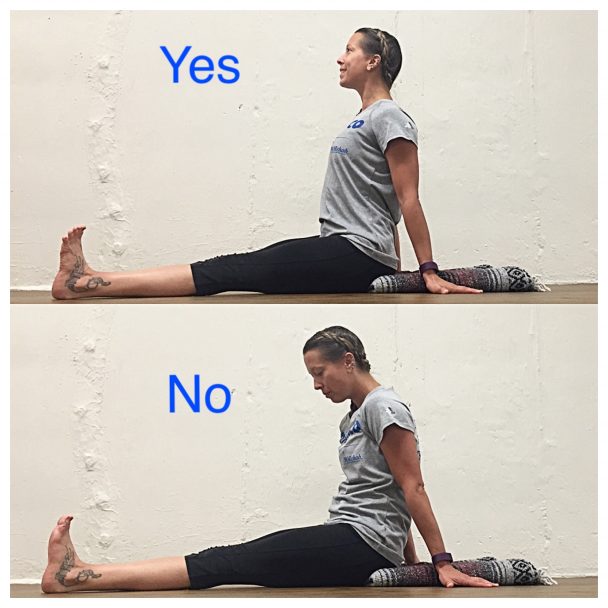
- Starting Position is to Sit on the very edge of the wrapped blanket on the floor.
- The blanket will tilt the pelvis forward, helping you to sit taller & straighter.
- Legs are together & straight out in front of you. Place the hands on either side of the hips & slightly behind you on the floor.
- To start the stretch, press the palms into the floor as you draw the shoulder blades together & down towards the tailbone.
- Pull the belly button inside the spine to protect the low back. This stretch is all about the chest & you should feel no strain or discomfort in the lower back. The legs stay contracted the entire time. The gaze stays at horizon level. The ears are in a parallel line with the shoulders.
- Take a moment to compare the yes & no photos. There should be no slouching & rounding of the shoulders. Do not bend too far back with your hands.
- Stay here for eight full breath cycles (1 cycle=1 inhale & 1 exhale).
Exercise for Subclavius Muscle
Alternating floor press exercise
- Lying down on the floor with 2 kettlebells next to the shoulders.
- Position 1 in place on the chest & then the other one. Make sure to grab the kettlebells using their handle & with the palms facing forward.
- Straighten both arms so the kettlebells are held above the chest.
- Lower one of the kettlebells by bringing it to the chest & turning the wrist in the way of the kettlebell that is locked out.
- Elevate the kettlebell & repeat with the opposite side. Complete ten reps on either side for a total chest workout.
laying on the floor exercise
- This option needed you to be able to get on the floor face downward.
- If it is not something you are easily able to do please skip to Option 2.
- Option 1
- Place the yoga block on the floor at a lower height. Lying face down with the block under the right collarbone. Support yourself with your hands & arms as shown in the picture. The right arm is supported through the fingertips of the hand. Place the tennis ball between yourself & the block, just below the collarbone. The subclavius muscle is situated just beneath the collarbone & this is the area you are the goal for. Slowly lean the body into the tennis ball. You can manage how much pressure is given by how much weight you press into the ball. From here shift yourself back & forth along the ball to massage the muscle below the collarbone. Do this exercise 10 to 15 times at a time. Repeat 3 sets of it.
- Option 2
- You will require available wall space. To start, stand facing the wall. Place the tennis ball between yourself & the wall, just below the collarbone. While grabbing the ball with the left hand, extend the left arm out to the side, “spidering” the fingers, & begin to slowly lean into the ball with the body weight. As above, gently shift back & forth to massage the area under the collarbone. Do this exercise 10 to 15 times at a time. Repeat 3 sets of it.
Breathing Exercises
Diaphragmatic Breathing Exercise
In supine position
- Lying on your back on a surface or in bed, together with your knees flex and your head supported to the bottom. you’ll use a pillow behind your knees to support the legs.
- Place one hand on his higher chest and therefore the alternative slightly below your skeletal structure. as you’re feeling your diaphragm move as you breathe.
- Breathe in slowly exploiting your nose so your abdomen moves away and it’ll permit your hand to rise. The hand on your chest ought to persist as still as connected
- Tight the abdominal muscles and allow them to fall within as you expire exploitation of your lips. The hand on your belly ought to move down to its original position
- In a sitting position in a chair, with your knees flex and your shoulders, head, and neck neutral position. you can perform for 7 to 10 minutes, several 5 to 6 times a day. Diaphragmatic exercise is also called a relation exercise.
In sitting position
- Sitting in a chair straight position and lengthen the distance between your umbilicus and sternum.
- your shoulders and neck should be relaxed.
- the pelvis is in the neutral position.
- your hand’s position should be at the side of your lower ribs.
- Breath in slow using your nose. As you inspirited feel your ribs should be outwards and upwards. During inspiration expansion of the trunk in three areas forward, sides, and back. expiration using your nose. As you expire your lower ribs move inward direction.
Segmental Breathing Exercise
Lateral costal expansion
- it is also called lateral basal expansion. it was usually done unilaterally or bilaterally. it can also be done in a sitting or lying position
- place your hand lateral aspect of the rib cage
- and ask the patient to breathe out and the rib cage should be downward and inward
- as the patient expired therapist should apply pressure on the rib cage with the palms of your hand
- before inspiration, you need to downward and inward stretch to the chest to facilitate the external intercostal contraction
- apply normal force on the lower rib cage to get stimulate and patient to get inspirited deeply and the chest will expand
- when the patient expiration therapist will squeeze the rib cage downward and the inward
- the patient may perform manually and ask to apply force with his hand or with the towel.
Posterior basal expansion
- This form of deep breathing exercise accent post-surgical maneuvers who have bedridden and cannot sit up for a prolonged time period. because of that time secretion move to the posterior segment of the lower side of the rib.
- sit and lean onward on a pillow, slightly bend your hips
- place the physiotherapist’s hand over a posterior segment of the rib
- place your hand lateral aspect of the rib cage
- ask the patient to breathe out and the rib cage should be downward and inward
- as the patient expired therapist should apply pressure on the rib cage with the palms of their hand
- before inspiration, you need to downward and inward stretch to the chest to facilitate the external intercostal contraction
- apply normal force on the lower rib cage to get stimulate and patient to get inspirited deeply and the chest will expand
- when the patient expired therapist will squeeze the rib cage downward and an inward
- the patient may perform indirectly ask to apply force with his hand or with a towel
Right middle lobe expansion(lingual expansion)
- the patient is in a sitting position therapist’s hand should be right or left side at the below axilla level
- ask the patient to breathe out and the rib cage should be downward and inward
- as the patient expired therapist should apply pressure on the rib cage with the palms of their hand
- before inspiration, you need to downward and inward stretch to the chest to facilitate the external intercostal contraction
- apply normal force on the lower rib cage to get stimulate and patient to get inspirited deeply and the chest will expand
- when the patient expiration therapist will squeeze the rib cage downward and the inward
- the patient may perform manually and ask to apply force with his hand or with a towel
Apical expansion
- Patient in a sitting position on a chair or bed therapist’s hand should be below the clavicle
- As the patient breathes out apply pressure with the palm or fingertip just below the clavicle
- Sitting with using your back straight or lying down. Relax each shoulder and neck the maximum amount as potential.
- inspiration using your nose for two to three seconds, the air is getting into your abdomen. fill your abdomen with air instead of your lungs.
- Purse your lips like you’re processing on hot food then expire slowly, taking double as long to exhale as you took to respire.
- you can repeat For several times. you’ll rise the inspiration and expiration counts from a pair of seconds to four seconds, and so on pursed lip breath effective.

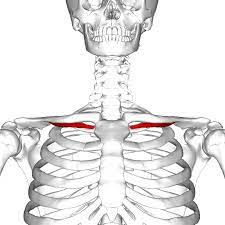
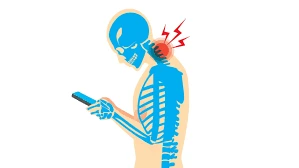
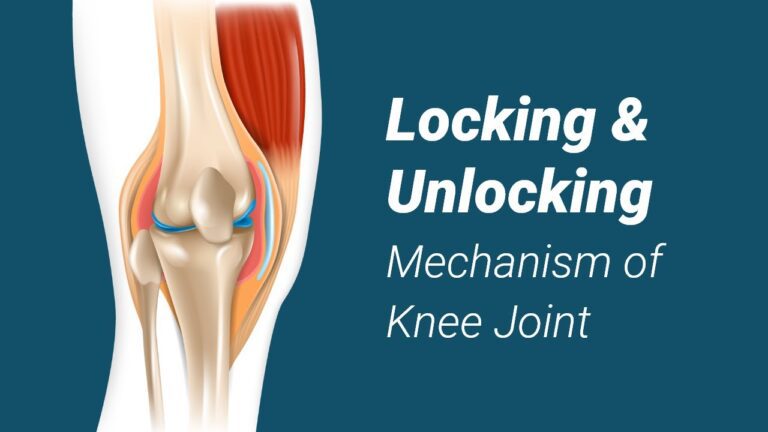

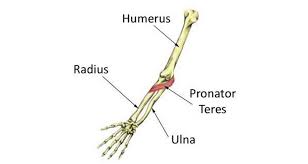
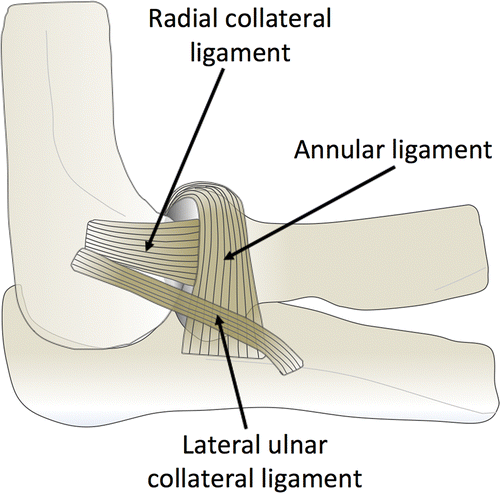
One Comment